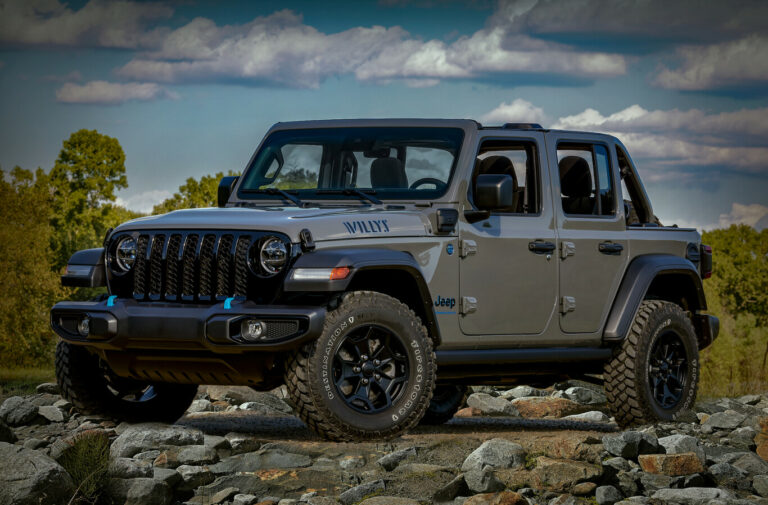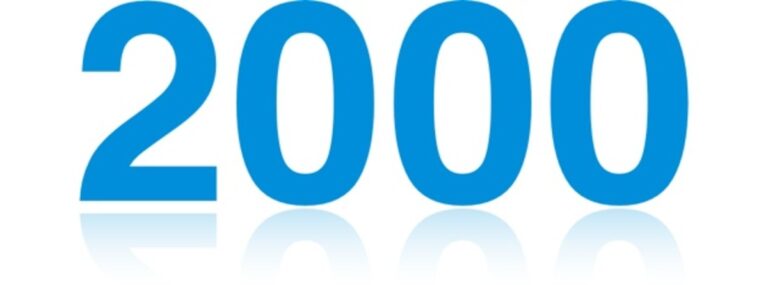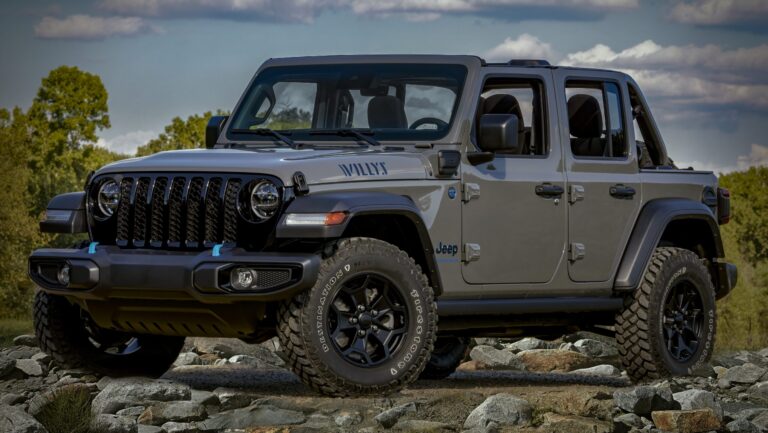Jeep Stroker Motor For Sale: Unleashing the Beast Within Your Wrangler or Cherokee
Jeep Stroker Motor For Sale: Unleashing the Beast Within Your Wrangler or Cherokee jeeps.truckstrend.com
For any Jeep enthusiast, the pursuit of more power and torque is an unending quest. Whether you’re tackling extreme off-road trails, towing heavy loads, or simply looking for a more exhilarating daily driving experience, the stock 4.0L inline-six engine in many beloved Jeep models often leaves something to be desired. This is where the "Jeep Stroker Motor" enters the scene – a powerful and popular solution designed to transform your Jeep from a capable cruiser into an unstoppable force.
A Jeep Stroker Motor refers to a modified engine, typically based on the venerable AMC 4.0L I6 found in models like the Cherokee (XJ), Wrangler (TJ/YJ), and Grand Cherokee (ZJ). The core concept involves increasing the engine’s displacement by utilizing a crankshaft with a longer "stroke" (hence "stroker") and often combining it with larger bore pistons. This seemingly simple modification dramatically increases the engine’s cubic inches, resulting in a substantial boost in horsepower and, more importantly for Jeeps, a massive surge in low-end torque. If you’ve been searching for "Jeep Stroker Motor For Sale," you’re on the path to unlocking a new level of performance for your rig.
Jeep Stroker Motor For Sale: Unleashing the Beast Within Your Wrangler or Cherokee
What Exactly is a Jeep Stroker Motor and How Does It Work?
At its heart, a stroker motor is an exercise in maximizing the potential of an existing engine block. For the Jeep 4.0L, the most common stroker configurations involve:
- Longer Stroke Crankshaft: Typically, a crankshaft from an older AMC 258 cubic inch (4.2L) engine is used. This crank has a longer throw than the 4.0L crank, increasing the distance the piston travels within the cylinder.
- Specific Connecting Rods: Depending on the crankshaft and piston combination, either the stock 4.0L connecting rods or custom-length rods are used to accommodate the longer stroke and prevent the pistons from hitting the cylinder head or skirts.
- New Pistons: Larger bore pistons are often used in conjunction with the longer stroke to further increase displacement. The cylinders are bored out to match these larger pistons.
By combining these elements, a standard 4.0L (242 cubic inch) engine can be transformed into a 4.6L, 4.7L, 4.9L, or even a 5.0L+ powerplant. This increase in displacement allows the engine to ingest and combust more air and fuel with each cycle, leading directly to more power and torque. The beauty of the stroker is that it retains the legendary reliability and simplicity of the original 4.0L architecture while delivering a performance boost that far exceeds what simple bolt-on modifications can achieve.

Why Consider a Stroker Motor for Your Jeep? The Performance Advantage
The reasons to invest in a "Jeep Stroker Motor For Sale" are compelling, especially for those who push their vehicles to the limits:
- Unrivaled Low-End Torque: For off-roading, torque is king. A stroker motor provides an incredible surge of power right off idle, making it easier to crawl over obstacles, climb steep grades, and power through mud and sand without constantly downshifting or losing momentum.
- Significant Horsepower Increase: While torque is crucial, strokers also deliver a substantial bump in horsepower, making highway driving more enjoyable, accelerating quicker, and maintaining speed on inclines with less effort.
- Enhanced Towing Capacity: If you tow a trailer, boat, or another vehicle, the added torque and horsepower of a stroker make the job much easier, reducing strain on the drivetrain and improving overall safety.
- Replacing a Tired Engine with an Upgrade: Instead of simply replacing a worn-out 4.0L with another stock unit, a stroker offers a comprehensive upgrade that breathes new life into your Jeep, often surpassing its original performance capabilities.
- Improved Daily Driving Experience: Even for daily commutes, the added power and responsiveness make the Jeep feel more agile and less strained, especially when running larger tires or carrying extra weight.
![]()
Key Considerations When Shopping for a Jeep Stroker Motor For Sale

Buying a stroker motor is a significant investment, and careful consideration is paramount. Here’s what you need to evaluate:
-
Displacement and Performance Goals:
- 4.6L: Often the most budget-friendly, offering a noticeable bump in power without requiring extensive supporting modifications. Good for general performance improvement.
- 4.7L: A popular sweet spot, balancing significant power gains with reasonable cost and good daily drivability.
- 4.9L – 5.0L+: These are high-performance builds, often using forged components and aggressive camshafts, delivering maximum power. They typically require more extensive supporting modifications and tuning.
-
Engine Builder Reputation and Experience: This is perhaps the most critical factor. Research builders thoroughly. Look for:
- Specialization: Do they focus on Jeep strokers?
- Reviews and Testimonials: What do other customers say?
- Component Sourcing: Do they use quality, reputable parts?
- Warranty: What kind of warranty do they offer, and what does it cover? A good builder stands behind their work.
-
Component Quality (Forged vs. Cast):
- Cast Components: Generally more affordable, suitable for mild to moderate builds (e.g., 4.6L, 4.7L).
- Forged Components (Crankshaft, Rods, Pistons): Essential for high-performance builds (4.9L+) or if you plan to add forced induction (turbo/supercharger). Forged parts are stronger and can withstand higher stresses.
-
Included Accessories and "Long Block" vs. "Crate Engine":
- Long Block: Typically includes the assembled block, rotating assembly, cylinder head, and valve cover. You’ll reuse or buy new external components like the intake manifold, exhaust manifold, sensors, etc.
- Crate Engine: A more complete package, often including the intake, throttle body, fuel injectors, sensors, water pump, and sometimes even a wiring harness or ECU. This is more "drop-in" ready but comes at a higher price.
-
Tuning and Engine Management Requirements: A stroker motor requires proper engine tuning. The stock ECU cannot adequately manage the increased air/fuel demands. You’ll likely need:
- Larger Fuel Injectors: To supply enough fuel.
- Custom ECU Tune/Reflash: From a reputable tuner or the engine builder.
- Standalone Engine Management System: For extreme builds, offering maximum tunability.
-
Shipping and Core Charges: Factor in shipping costs, which can be substantial for an engine. Also, many builders require a core charge for your old engine, which is refunded upon receipt of a usable core.
Where to Find Jeep Stroker Motors For Sale
Several reputable sources exist for purchasing a Jeep stroker motor:
- Specialized Engine Builders: Companies like Hesco, Golen Engine Service, ATK Engines, and many smaller, regional performance shops specialize in building and selling high-quality stroker motors. These are often the safest bet due to their expertise and warranties.
- Online Marketplaces: Websites like eBay, dedicated Jeep forums (e.g., NAXJA, JeepForum), and Facebook Marketplace can have listings. Exercise extreme caution here. Verify the seller’s reputation, ask for detailed photos and documentation, and ideally, inspect the engine in person. A "deal" on a poorly built engine can quickly become a money pit.
- Local Performance Shops: Your local automotive performance shop might offer stroker builds or have connections to reputable builders.
Understanding the Cost: What Drives Jeep Stroker Motor Pricing?
The price of a Jeep stroker motor varies significantly based on the factors discussed above. Here’s a general breakdown:
| Stroker Displacement | Typical Power (HP/Torque) | Key Features / Components | Estimated Price Range (USD) | Notes |
|---|---|---|---|---|
| Entry-Level 4.6L | 220-240 HP / 280-300 lb-ft | Remanufactured 4.0L block, 4.2L crank, 4.0L rods, new cast pistons, mild cam, rebuilt stock head. Focus on reliability and budget. | $3,500 – $5,500 | Good budget upgrade. May require basic tuning adjustments (e.g., injector swap). Often a "long block." |
| Performance 4.7L | 250-270 HP / 310-340 lb-ft | New or reconditioned 4.2L crank, performance cast pistons, balanced rotating assembly, port/polished cylinder head, performance camshaft, upgraded valvetrain. | $5,500 – $8,000 | Balanced for strong daily driving and off-road performance. Requires custom tuning and larger injectors. |
| High-Performance 4.9L – 5.0L+ | 280-320+ HP / 350-400+ lb-ft | Forged crankshaft, forged rods, forged pistons, heavily ported/big valve cylinder head, aggressive camshaft, often includes custom intake/throttle body. | $8,000 – $12,000+ | Built for serious performance. Often includes specific fuel/ignition systems. Requires advanced tuning and may necessitate supporting drivetrain upgrades. |
Disclaimer: These prices are estimates and can fluctuate based on the specific builder, brand of components used, warranty offered, and what exactly is included in the package (e.g., sensors, intake manifold, water pump). Always get a detailed quote that outlines all inclusions. Shipping costs and core charges will be additional.
Installation and Essential Supporting Modifications
Simply dropping a stroker motor into your Jeep isn’t the end of the journey. To maximize its potential and ensure longevity, supporting modifications are crucial:
- Cooling System Upgrade: More power generates more heat. A high-efficiency radiator (2 or 3-row aluminum), upgraded water pump, and a high-flow fan clutch or electric fan are highly recommended.
- Fuel System: Larger fuel injectors are essential to provide enough fuel. A high-flow fuel pump might also be necessary for higher displacement builds.
- Exhaust System: A performance header and a larger diameter exhaust system (2.5" or 3") will allow the engine to breathe better, maximizing power and efficiency.
- Engine Management/Tuning: As mentioned, this is non-negotiable. A proper tune optimizes fuel delivery, ignition timing, and other parameters for the increased displacement. Without it, you risk poor performance, reduced fuel economy, and potential engine damage.
- Drivetrain Considerations: For very high-horsepower strokers (4.9L+), consider upgrading your transmission, transfer case, and axles. The increased torque can put significant strain on weaker factory components, especially when paired with larger tires and aggressive off-roading.
Practical Advice and Actionable Insights
- Define Your Goals: Before you even look for "Jeep Stroker Motor For Sale," decide what you want to achieve. Daily driver with a bit more oomph? Extreme rock crawler? Tow rig? Your goals will dictate the displacement and type of build you need.
- Budget Beyond the Engine: Remember to factor in the cost of supporting modifications, installation (if you’re not doing it yourself), and professional tuning.
- Ask Questions, Get Details: Don’t hesitate to ask builders about their process, component brands, warranty specifics, and what’s included. Get everything in writing.
- Read Reviews and Forums: Learn from the experiences of others. Forums are a goldmine of real-world information and recommendations.
- Consider a "Crate Engine" for Simplicity: If you’re not comfortable sourcing all the external components, a complete crate engine from a reputable builder can save time and potential headaches.
Conclusion: Unleash the Full Potential of Your Jeep
Investing in a Jeep stroker motor is one of the most impactful upgrades you can make to your 4.0L-powered Jeep. It transforms the vehicle, providing the robust power and torque necessary to tackle any challenge, whether on the trail or the highway. While it’s a significant financial and mechanical undertaking, choosing a reputable builder, understanding the supporting modifications, and getting a proper tune will ensure that your "Jeep Stroker Motor For Sale" purchase leads to years of exhilarating, reliable performance. Prepare to experience your Jeep like never before – a true beast unleashed.
Frequently Asked Questions (FAQ) about Jeep Stroker Motors
Q1: What’s the main difference between a stroker and a regular rebuilt engine?
A1: A regular rebuilt engine restores the original displacement and performance specifications. A stroker engine intentionally increases the displacement (cubic inches) beyond stock, resulting in significantly more horsepower and torque.
Q2: Do I need to upgrade my transmission or other drivetrain components?
A2: For mild to moderate strokers (4.6L-4.7L), the stock transmission and transfer case can often handle the power, especially if they are in good condition. However, for high-performance builds (4.9L+) or if you frequently engage in demanding off-roading with large tires, upgrading the transmission, transfer case, and even axles may be necessary to prevent premature wear or failure.
Q3: Will a stroker motor pass emissions tests?
A3: This depends heavily on your local emissions regulations and the specific build of the stroker. Many reputable builders design their strokers to be emissions-compliant for certain regions, but an aggressive camshaft or specific tuning can sometimes cause issues. Always check your local laws and discuss this with your engine builder.
Q4: What kind of fuel does a stroker motor need?
A4: Most stroker motors are designed to run on 87 or 89 octane pump gas, especially the more common 4.6L and 4.7L variants. High-compression or very aggressive builds might require premium 91 or 93 octane fuel. Always follow the builder’s recommendations.
Q5: How much more power will I actually get?
A5: A 4.0L stock engine typically produces around 190 HP and 225 lb-ft of torque. A well-built 4.6L stroker can deliver 220-240 HP and 280-300 lb-ft. A 4.7L can reach 250-270 HP and 310-340 lb-ft. The largest builds (4.9L-5.0L+) can push 280-320+ HP and 350-400+ lb-ft of torque. These numbers are estimates and vary based on the specific components, tune, and supporting modifications.
Q6: Is a stroker motor reliable for daily driving?
A6: Yes, a properly built and tuned stroker motor from a reputable builder can be just as reliable as a stock engine for daily driving. The key is quality components, precise machining, and a professional tune. Avoid "budget" builds that cut corners on critical parts.
Q7: Can I build a stroker motor myself?
A7: Building a stroker requires significant mechanical knowledge, specialized tools, and access to a machine shop for boring, honing, and balancing. While some experienced DIYers undertake this, for most, purchasing a professionally built stroker motor is a more reliable and less stressful option.




